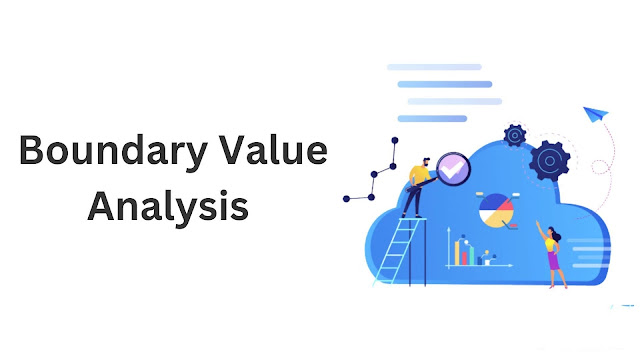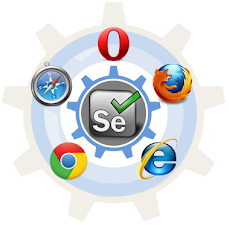Mastering Software Testing Techniques: Boundary Value Analysis to State Transition
Software testing techniques refer to the different methods or approaches used to evaluate the quality of software. These techniques are used to identify defects, errors, and bugs in the software to ensure that it meets the desired quality standards. The following are some of the commonly used software testing techniques:
1. Boundary Value Analysis (BVA)
Boundary Value Analysis (BVA) is a testing technique used to identify errors around the boundaries of input values. In this method, the values at the boundaries of input parameters are tested to check if the system handles the values correctly.Let's take an example to understand this better. Suppose we have a simple calculator application that takes two integers as input and performs addition. The boundary values for this scenario would be the maximum and minimum values of integers, i.e., 2147483647 and -2147483648, respectively.
Now, to test this calculator using BVA, we would first test the scenario where both input values are at their minimum boundary. So, we would test the scenario where the first input is -2147483648 and the second input is -2147483648. Then, we would test the scenario where one input value is at its minimum boundary and the other is at its maximum boundary, i.e., (-2147483648, 2147483647) and (2147483647, -2147483648). Finally, we would test the scenario where both input values are at their maximum boundary, i.e., (2147483647, 2147483647).
The idea behind this testing technique is to ensure that the system handles input values correctly at the boundaries. In the example above, we are testing if the calculator application can handle the maximum and minimum values of integers correctly, which are often prone to errors.
When to choose Boundary value analysis testing technique:
Boundary value analysis is a type of testing technique that is used to identify errors and defects in the boundaries of a system or application. It is especially useful for identifying faults in numeric and other input values where there is a range of valid inputs.
This technique is most useful in situations where input values can be specified within certain limits or a specific range, such as age limits or price ranges. By analyzing the input values on or near the boundary limits, the tester can find defects that may not be obvious with typical input values.
For example, if an application has a requirement that a user must be at least 18 years old to create an account, the tester would perform boundary value analysis by testing inputs for values just below and above 18 years old, as well as at 18 years old, to ensure that the application is properly handling all of these scenarios.
Boundary value analysis should be chosen in the following situations:
- When testing numerical values with a specified range.
- When testing input fields with constraints.
- When testing applications with specified limits, such as age limits or price ranges.
In general, boundary value analysis is a useful technique for ensuring that an application is functioning properly within the specified limits of input values.
Pros of Boundary Value Analysis:
- BVA helps to identify errors around the boundary values of input parameters.
- It is a cost-effective testing technique as it helps to identify errors with minimal test cases.
- It is an efficient way of identifying errors that could have a significant impact on the system.
Cons of Boundary Value Analysis:
- BVA can be time-consuming as it involves testing multiple scenarios with different input values.
- It can be challenging to identify all the boundary values of input parameters in complex systems.
- It does not guarantee that all possible errors will be identified, as some errors may occur outside the boundary values.
2. Equivalence Partitioning
Let's understand this technique with the help of an example. Consider a form that accepts a user's age as input. The valid age range is between 18 to 60 years. In this case, we can divide the input domain into three partitions:
- Partition 1: Age < 18 (Invalid input)
- Partition 2: 18 ≤ Age ≤ 60 (Valid input)
- Partition 3: Age > 60 (Invalid input)
Now, we can select one value from each partition to design our test cases. For example, we can select the following test cases:
- Test case 1: Age = 16 (Invalid input)
- Test case 2: Age = 25 (Valid input)
- Test case 3: Age = 65 (Invalid input)
By using this technique, we can reduce the number of test cases from an infinite number of values to a finite number of values. Equivalence Partitioning is a useful technique when the input domain of the software is large and complex.
When to Choose Equivalence Partitioning:
The equivalence Partitioning technique is best suited for the following scenarios:- The input domain of the software is large and complex.
- The software has multiple inputs, and it is not possible to test all possible combinations.
- The test cases need to be optimized to reduce the number of test cases and improve test efficiency.
- The software has some input constraints or business rules that need to be tested.
Pros of Equivalence Partitioning:
- It helps to reduce the number of test cases and saves time and effort.
- It helps to improve the test coverage by selecting a representative value from each partition.
- It helps to identify defects and errors in the software quickly.
- It helps to design more effective and efficient test cases.
Cons of Equivalence Partitioning:
- It may not work well for complex and interdependent systems.
- It may not detect errors caused by the interaction between different input values.
- It may not cover all possible scenarios and edge cases.
- It requires a good understanding of the software requirements and input domain.
3. Decision Table
Here is an example to explain the decision table testing technique:
Let's say we are testing a web application that sells books. One of the requirements of the application is that customers who purchase more than three books should receive a discount of 10%. The decision table would be constructed as follows:
| Condition | Action |
|---|---|
| Number of books purchased is less than or equal to 3 | No discount applied |
| Number of books purchased is greater than 3 | Discount of 10% applied |
In this example, the condition is the number of books purchased, and the action is the discount applied. By analyzing the decision table, we can identify all possible scenarios, such as:
- If a customer purchases three books, they will not receive a discount.
- If a customer purchases four or more books, they will receive a 10% discount.
When to Choose Decision Table Testing:
Decision table testing is useful when the software has complex business rules that need to be tested. It is also suitable for testing systems that have a large number of inputs and outputs, as it helps testers to identify all possible scenarios in a structured way.
Pros of Decision Table Testing:
- It provides comprehensive coverage of all possible input combinations and actions.
- It helps testers identify missing or incorrect business rules.
- It allows for efficient and structured test design.
Cons of Decision Table Testing:
- It can be time-consuming and complex to create and maintain a decision table.
- It may not be suitable for systems with simple or few business rules.
4. Use Case Testing
Example of Use Case Testing:
Let's consider an example of a software system used by a bank teller to perform various tasks such as account opening, transaction processing, and account management. A use case for the account opening process may look like this:
- The bank teller logs in to the system.
- The bank teller selects "Account Opening" from the menu.
- The system presents a form for entering customer information.
- The bank teller enters the customer's information into the form.
- The system validates the entered data and displays any errors.
- The bank teller corrects any errors and submits the form.
- The system creates a new account and displays the account information.
When to choose Use Case Testing:
Use Case Testing is useful in scenarios where the software system is complex and has many possible user interactions. It is particularly useful in testing applications where the user interface is critical, and the user's interaction with the system can have a significant impact on the overall performance of the software.
Pros:
- It helps identify gaps in the functional requirements of the software.
- It provides a clear and concise understanding of the software from the user's perspective.
- It ensures that the software is aligned with the business requirements.
Cons:
- Use Case Testing can be time-consuming and require significant effort to create comprehensive use cases.
- It may not be suitable for testing non-functional requirements such as performance, security, and usability.
- It may not be effective in identifying edge cases or exceptional scenarios.
5. Error Guessing
One of the main advantages of error guessing is that it can uncover defects that might be missed by other testing techniques. For example, a tester who is familiar with a particular software application might have an intuition that a certain input value is likely to cause the application to crash. This type of defect might not be detected by automated testing tools or even by other manual testing techniques.
Here is an example of how Error Guessing might be used in practice:
Suppose that a software application allows users to upload files to a server. A tester who is familiar with the application might guess that certain file types (such as large video files) are likely to cause problems with the upload process. The tester might then attempt to upload a variety of files of different sizes and formats to see if any errors occur.
In order to use error guessing effectively, it is important to have a deep understanding of the software being tested and the potential failure modes that could occur. Testers who are new to a software application may not be able to use this technique effectively until they have gained some experience with the software.
One potential drawback of error guessing is that it can be difficult to document the testing process in a way that can be easily reproduced or communicated to others. This can make it difficult to verify that all necessary tests have been performed and to ensure that the software is thoroughly tested.
When to Choose Error Guessing?
Error guessing is typically used when the software is being tested for the first time and when the testers have a good understanding of the software's requirements and functionality. This technique is particularly useful when there is not enough time or resources to design and execute a comprehensive set of test cases.
Pros:
- Error guessing is a quick and easy technique that can identify errors that might have been missed by other testing techniques.
- The technique relies on the testers' experience and intuition, which can lead to a more efficient and effective testing process.
- The approach is flexible, allowing testers to design and execute test cases as needed.
Cons:
- The technique is subjective, which means that the results might vary from tester to tester.
- There is no systematic way to identify and prioritize test cases, which can lead to incomplete test coverage.
- The effectiveness of the technique depends heavily on the testers' experience and intuition, which can be a limiting factor in identifying all potential errors.
6. State Transition
Example of State Transition:
Let's say we are testing a traffic light system that has three states: red, yellow, and green. The system changes from one state to another based on a specific set of rules. For example, the system changes from green to yellow after a certain amount of time, and then from yellow to red after a certain amount of time.In state transition testing, we would test the system to ensure that it behaves correctly when transitioning from one state to another. For example, we would test to ensure that the system correctly transitions from green to yellow after a certain amount of time, and then from yellow to red after a certain amount of time. We would also test to ensure that the system does not transition to an invalid state, such as going from red to green without first going through yellow.
Overall, state transition testing is a useful technique for testing systems that have a finite number of states, and it can be used to identify defects related to the state transition of the system.
When to choose State Transition:
State transition testing is typically used for systems that have a finite number of states, such as user interfaces, embedded systems, and state machines. It is useful in situations where the system under test is expected to behave differently based on its current state.Pros:
- Helps in identifying errors related to state transition in the system.
- Easy to implement and execute.
- Can be used to identify defects in complex state machines.
- Can be used for both manual and automated testing.
Cons:
- Can be time-consuming if the system has a large number of states.
- Can be difficult to identify all possible state transitions for complex systems.
- May require specialized tools or software to automate the testing process.









.png)














Comments
Post a Comment